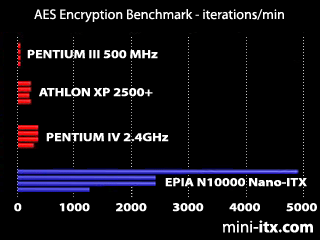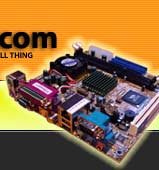|  | September 05, 2017
Choosing the right DC-DC PSU August 27, 2015
AMD's Project Quantum August 13, 2015
The Redstone PC is the ultimate Mini-ITX Minecraft Machine October 09, 2014
The "Restomod TV" April 09, 2013
Installing NAS4Free February 28, 2013
Building an XBMC 12 Home Theatre PC January 25, 2011
XBMC Guide updated to version 10.0 August 06, 2010
Building a Green PC February 15, 2010
Building an ION powered HTPC with XBMC October 10, 2008
The "Cambridge Autonomous Underwater Vehicle 2008" |
|  | | | September 12, 2008
"Florian", the DVD burning robot September 05, 2008
The "i-EPIA" May 22, 2008
The "GTA-PC" April 14, 2007
The "Digg" Case January 19, 2007
The "ITX-Laptop" December 07, 2006
The "Tortoise Beetle" October 02, 2006
The "DOS Head Unit" August 31, 2006
The "Janus Project" August 05, 2006
The "Leela PC" June 26, 2006
Nano-ITX in a Football May 17, 2006
The "EPIA Alloy Mod" April 11, 2006
Neatorama's Collection of Case Mods February 18, 2006
The "Rundfunker" October 24, 2005
The "ITX TV" October 06, 2005
The K'nex-ITX August 05, 2005
The "Waffle Iron PC" July 21, 2005
The "Supra-Server" July 18, 2005
The "Mega-ITX" July 07, 2005
The "Encyclomedia" May 25, 2005
The "Accordion ITX" |
|  | | | May 16, 2005
The "FileServerRouterSwitch" May 15, 2005
The "Mini Falcon" May 13, 2005
The "Bender PC" May 11, 2005
The "BBC ITX B" May 10, 2005
The "Frame" April 20, 2005
The "Jeannie" March 09, 2005
The "Cool Cube" January 30, 2005
First Nano-ITX Project? January 17, 2005
The "iGrill" January 15, 2005
The "Gumball PC" December 15, 2004
The "Deco Box" December 03, 2004
The "TERA-ITX" October 06, 2004
The "Coealacanth-PC" September 17, 2004
The "Gramaphone-ITX-HD" August 26, 2004
The "C1541 Disk Drive ITX" August 25, 2004
The "SEGA-ITX" August 13, 2004
The "Quiet Cubid" August 06, 2004
The "BMWPC" July 14, 2004
The "Moo Cow Moo" July 02, 2004
The "Mini Mesh Box" Full alphabetical archive on right hand side of page... |
|
|
VIA EPIA N10000 Nano-ITX Review
AES Encryption Benchmarking
VIA's AES Benchmark tool is a synthetic AES encryption benchmark for calculating AES encryption speeds through software as well as hardware, although the tool only tests the hardware encryption (AES Core) of the Luke processor. Standard x86 CPUS from AMD and Intel do not have hardware encryption, and perform these calculations in software.
AES Encryption functionality is part of VIA's 'Padlock' Security Suite.
The Advanced Encryption Standard (AES) cipher is used in numerous cryptographic protocols, including TLS (SSL), SSH, and IPSEC. AES is a royalty-free FIPS approved standard intended to ultimately replace DES.
The AES Benchmark Tool is available for download here
We ran 100 iterations for each test, several times over and averaged the results (they can slightly vary each time). Then we converted the results into iterations per minute, to make interpretation easier. Each iteration represents 1000 calculations.

The N10000 can calculate AES instructions directly using the CPU, something our office machines (and most current CPUs) are not able to do. In one minute, we managed 4900 ECB iterations, 2400 CBC and CFB iterations, and 1230 OFB iterations. Our nearest competitor (a 2.4Ghz Pentium IV) managed 368 iterations on its fastest test.
The N10000 was between 4 and 13 times faster than our Pentium IV on each encryption test, an impressive achievement. With software designed to use Padlock technology, the N10000 clearly has a huge advantage over most other boards.
The science bit: The AES core of the Luke CPU performs a single AES block round operation in two processor clock cycles. Pipelined operation is supported for operations on independent blocks, giving a net throughput of one round per clock. ECB mode encryption utilises independent blocks and can be pipelined, whereas CBC, CFB and particularly OFB mode encryption do not - hence the faster encryption times for ECB. Traditional x86 platforms require at least 250 clock cycles per block to perform the same calculations, so even with higher clock speeds they cannot match the C5P's dedicated technology.
More information about how VIA's Padlock works
Video Playback Tests -->
*Advert* World's Smallest 12V DC-DC ATX
Power Supply now at the Mini-ITX store! *Advert*
The picoPSU is now available at the Mini-ITX.com Online Store. We serve the UK, Europe, USA and beyond. Order in-stock components before 7.00PM GMT and we'll ship same day! |
|
|
|







